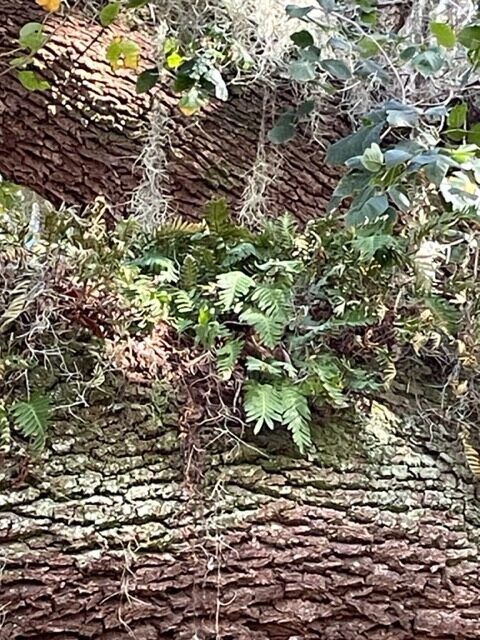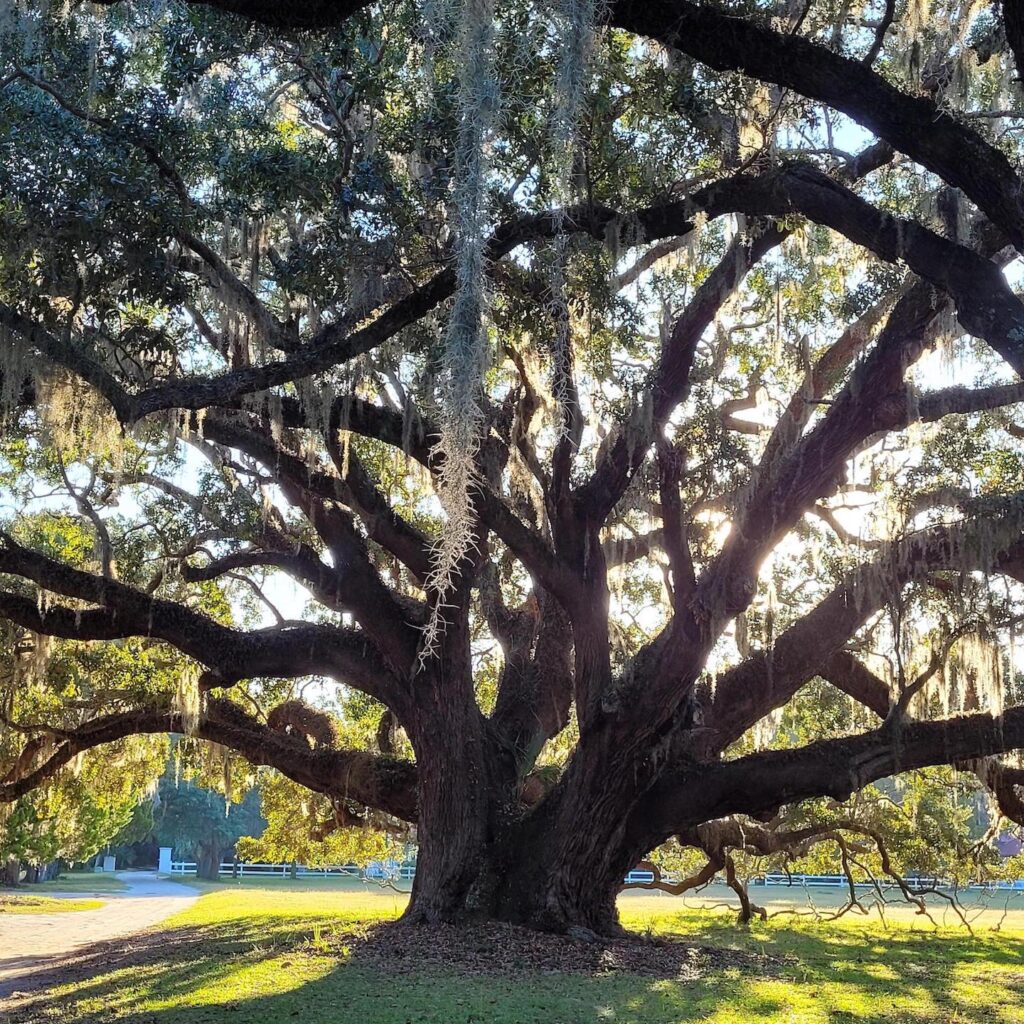Last week our family was fortunate enough to spend three days on Georgia’s coastal island, Cumberland Island. Most of the island is designated as a National Seashore, meaning that it is a rare and beautiful coastal wilderness.
This wilderness area is dominated by one of the most beautiful and majestic of all trees, the Southern Live Oak, Quercus virginiana. With huge limbs dripping with Spanish moss, these trees are an iconic symbol of the South and is the state tree for Georgia.

Though it’s often described as evergreen, it is really. not. During a short span of a few weeks in spring, the live oak will lose leaves and almost immediately grow new ones. In autumn, it drops copious numbers of acorns with can germinate almost immediately.
The Southern Live Oak is a keystone species and is home, food or support for hundreds of mammal, bird, plant and insect species. Acorns feed northern bobwhites and Florida scrub jays, wild turkey, black bears, squirrels and deer. The leaves host any number of moth and butterfly species.

It seems that whole worlds grow on the limbs and in the treetop. In addition to the Spanish moss, resurrection fern, fig vine, lichen, epiphytes and dozens of other plants call the live oak “home.”
On the grounds of the inn where we stayed, one tree, in particular, captured our attention. With multiple trunks coming from a single root system, the tree was huge and was estimated to be over 350 years old. As impressive as it is, though, it cannot compare in size or age to other live oaks growing in the South.

The Seven Sisters Live Oak Tree in Mandeville, LA is estimated to be between 500 – 1000 years old. Measurements taken in 2016 found a circumference of 39.6 feet and a height of 57 feet.
The Southern Live Oak is a beautiful and awe inspiring example of the importance of a single species. To lose even a single live oak tree would impact hundreds of different organisms and would greatly diminish the beauty of our world.
